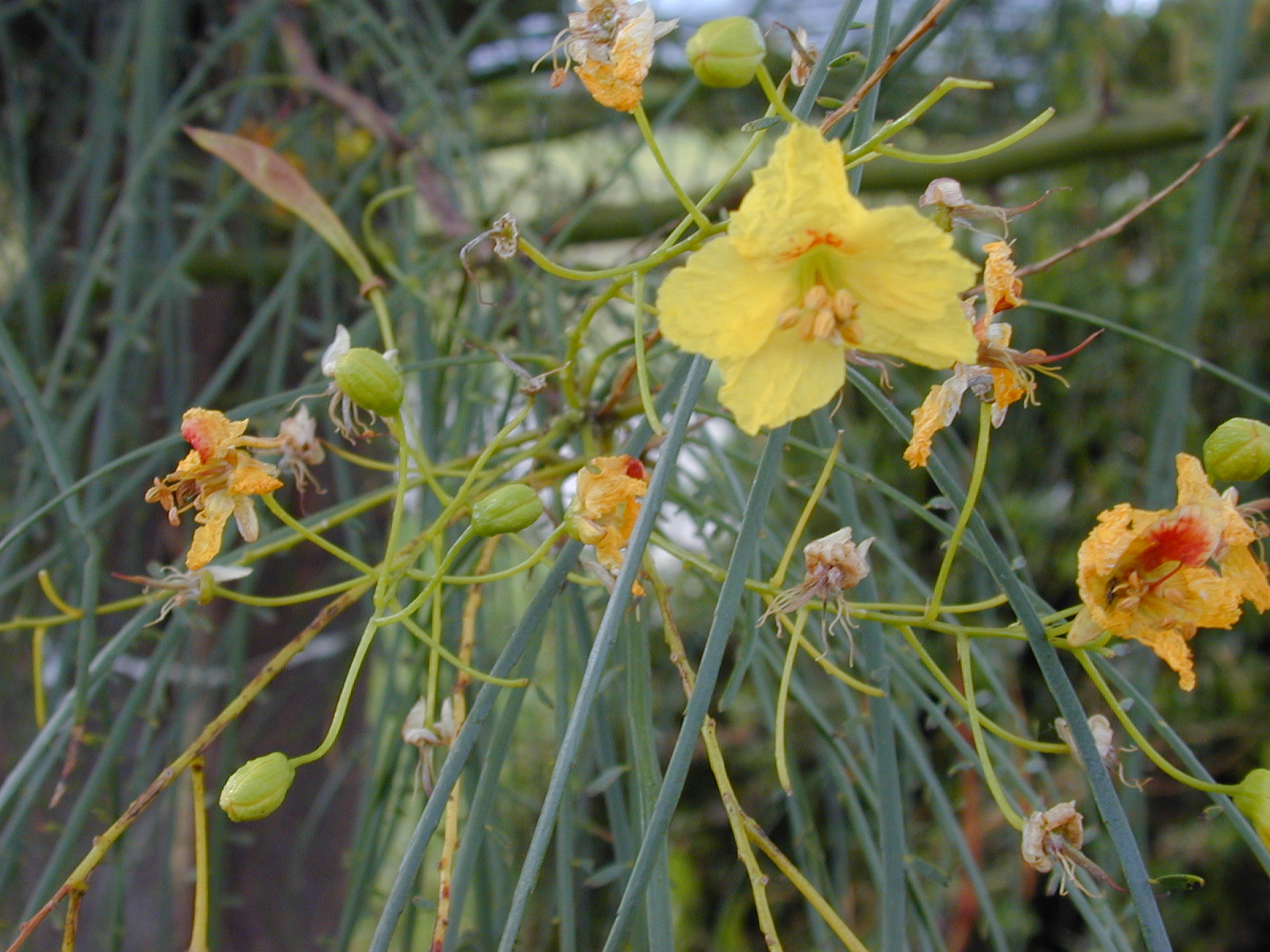- Parkinsonia aculeata
Taxobox
name = "Parkinsonia aculeata"

image_width = 240px
image_caption = Flowers, leaves and pods
regnum =Plantae
divisio = Magnoliophyta
classis =Magnoliopsida
ordo =Fabales
familia =Fabaceae
subfamilia =Caesalpinioideae
tribus =Caesalpinieae
genus = "Parkinsonia "
species = "P. aculeata"
binomial = "Parkinsonia aculeata"
binomial_authority = L."Parkinsonia aculeata" is a
tree from the familyFabaceae ; common names include Mexican Palo Verde, Parkinsonia, Jerusalem thorn, or Jellybean tree. It is native to the southwesternUnited States (westernTexas , southernArizona ),Mexico , theCaribbean ,South America south to northernArgentina , and theGalapagos Islands .It grows from 2 to 8 meters high. The leaves and stems are hairless. The flattened leaf stalk is edged by two rows of 25-30 tiny oval leaflets; the leaflets are soon
deciduous in dry weather, leaving the green leaf stalks and branches to photosynthesize. The branches grow sharp spines 7-12 mm long. Theflower s are yellow and fragrant, 20 mm in diameter, growing from a long slender stalk in groups of eight to ten. Thefruit is a pod, leathery in appearance, light brown when mature.Invasive problems
"P. aculeata" is a major
invasive species inAustralia , parts of tropicalAfrica ,Hawaii , and other islands in thePacific Ocean .It was introduced to Australia as an
ornamental tree and for shade around 1900. It is now a serious weed widespread throughWestern Australia , theNorthern Territory andQueensland , covering about 8,000 square kilometres of land, and has the potential to spread through most of the semi-arid to subhumid tropical area in Australia.It forms dense thickets, preventing access for humans, native animals and livestock to waterways. The seed pods float, and the plant spreads by dropping pods into water, or pods are washed dowstream by seasonal flooding.
Several control methods are used to reduce the existing population and the spread of "P. aculeata" in Australia. Three insects have been introduced to Australia for
biological control ; the parkinsonia seed beetles, "Penthobruchus germaini" and "Mimosetes ulkei", both havelarvae that specifically eat the seeds from parkinsonia pods and are proving to be a useful management tool, and the parkinsonia leaf bug, "Rhinacloa callicrates", which destroys photosynthetic tissues but has had no impact on the weed. Fire is effective for young trees; mechanical removal and herbicides are also used.References
* [http://www.ars-grin.gov/cgi-bin/npgs/html/taxon.pl?26783 Germplasm Resources Information Network: "Parkinsonia aculeata"]
*Cooperative Centre for Weed Management. [http://www.weeds.crc.org.au/main/wom_parkinsonia.html Weed of the month - Parkinsonia aculeata] , April 2005
*QLD Dept of Natural Resources and Mines, Land Protection. 2004. [http://www.nrm.qld.gov.au/factsheets/pdf/pest/PP36.pdf NRM facts pest series: Parkinsonia]
* [http://www.hear.org/Pier/species/parkinsonia_aculeata.htm Pacific Island Ecosystems at Risk: "Parkinsonia aculeata"]
Wikimedia Foundation. 2010.
